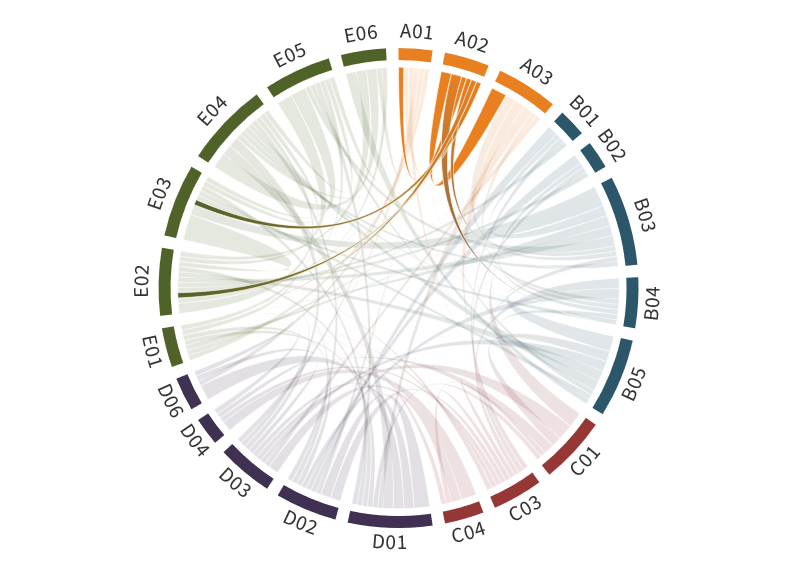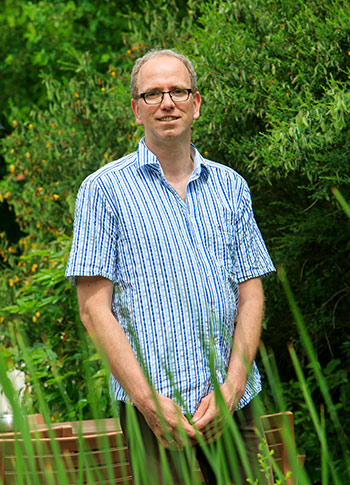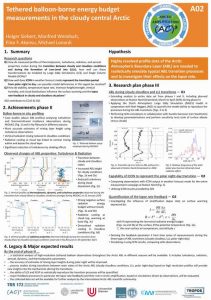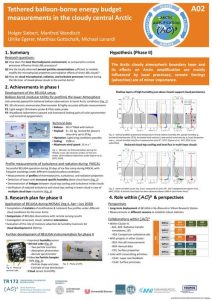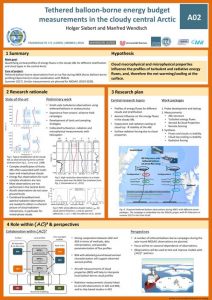A02: Balloon-borne observations and dedicated simulations of the transitions between typical states of the Arctic atmospheric boundary layer
This project builds on the successful balloon-borne measurements in phases I and II of (AC)³. As a major achievement, we have compiled a comprehensive set of data consisting of combined thermodynamic, turbulence, radiation, and aerosol/cloud properties. The data were collected in cloudless and cloudy conditions over Arctic sea ice and snow-covered land surface. They were assembled with partly newly developed instruments carried by tethered balloons during several campaigns. As a first step, the measurements enabled to derive more accurate surface layer mixing (SML) heights during polar night. Furhermore, important conclusions were drawn about the effects of entrainment of humid air at the top of clouds, the suppression of turbulence generated by cloud top radiative cooling in the lower cloud of a multi-layer cloud system, and the footprints of air mass characteristics in measured thermodynamic and aerosol/cloud profiles. First case studies observing the transition processes (cloud formation and decay, low-level jet (LLJ) formation) and comparative studies between polar night and day were conducted. However, the complexity of the balloon operations limited the continuity of profiling, which partially prevented an in-depth evaluation of the observed transition processes. Furthermore, it became increasingly obvious that the interpretation of the measurements would benefit greatly from an own additional modeling component.
Therefore, we propose to use smaller balloons with more compact payloads in phase III to increase flexibility and enable profile measurements over extended periods with a 5-minutes interval between the profiles. This will facilitate to study the important transitions between typical states of the Arctic atmospheric boundary layer (ABL) in, so far, unprecedented temporal resolution. To obtain the required measurements, we suggest a four-week campaign in North-East Greenland (Villum Station, Station Nord). In addition, we propose to apply a sophisticated large eddy simulation (LES) model and a single-column model (SCM) to quantify the ability of the models to adequately represent the transition processes, to identify corresponding weaknesses, and to perform dedicated process studies. The LES fully resolves the dynamical boundary layer processes on larger scales, but is more complex to operate and computationally expensive. The SCM is less complicated to run, it is fast, and can be used for inexpensive parameterization testing and sensitivity studies. Furthermore, we plan to include ICON simulations in weather forecast mode in coarser temporal resolution. These ICON runs will cover the entire measurement period of the proposed campaign in Greenland and will be used to assess the transition from polar night to polar day. Finally, the measurement and modeling efforts proposed in this project will be applied to quantify the impact of changes of the ABL structure and height during the three state transitions investigated in our project on the surface warming via the lapse rate feedback.
Hypothesis:
Highly resolved profile data of the Arctic ABL are needed to realistically simulate typical ABL transition processes and to investigate their effects on the lapse rate feedback.
Specific questions:
- How do measured profiles of thermodynamic, turbulence, radiative, and aerosol properties evolve during the transition from cloudless to cloudy conditions and during the formation of LLJs, and how well can these non-steady transformations be modeled by LES and SCMs?
- How well does ICON in weather forecast mode represent the transition period from polar night to day, and can possible model deficiencies in this regard be resolved?
- How do stability, temperature lapse rate, inversion height/strength, vertical humidity and cloud distributions influence the surface warming and the lapse rate feedback in cloudless and cloudy situations?
Arctic amplification appears most pronounced in winter, when particularly distinct near-surface air temperature and humidity inversions, and related shallow ABLs develop. With the profile measurements and simulations proposed in this project we will investigate how these ABL specifics and their changes during typical transformation processes influence the lapse rate feedback as one of the major drivers of Arctic amplification. Thus, we will contribute to the understanding and quantification of the lapse rate feedback for near-surface warming in winter. In this way, the project will contribute to answer SQ1.
Achievements phase II
- Generation of a comprehensive data set of thermodynamic, turbulence, radiation, and aerosol/cloud parameter profiles , with a significant portion collected during polar night (Lonardi et al., 2022; Akansu et al., 2023a),
- More accurate estimation of SML heights during the polar night from vertically resolved direct turbulence observations (Akansu et al., 2023a),
- Verification of the effects of entrainment of humid air at the top of clouds on their lifetime Egerer et al. (2021); Neggers et al. (2019),
- Approval of the effect of suppression of turbulence (generated by cloud top radiative cooling) in the lower cloud of a multi-layer cloud system due to shadowing effects (Lonardi et al., 2022),
- Detection of signatures of air mass characteristics imprinted in the measured profiles of aerosol, radiation, and meteorological parameters (Pilz et al., 2023),
- Development of a new method for estimating turbulent fluxes (Egerer et al., 2023a), and
- Investigation of the potential role of a LLJ for long-range transport (Egerer et al., 2023b).
Achievements phase I
A02 developed a novel instrumental payload carried by a tethered balloon. The Balloon-bornE moduLar Utility for proilinG the lower Atmosphere (BELUGA) system was applied on the sea ice camp during PASCAL (Knudsen et al., 2018b; Wendisch et al., 2019; Egerer et al., 2019). Humidity inversions just above cloud top have been discovered by the balloon measurements and verified by LES results (Neggers et al., 2019). With these data, the entrainment of moisture into the cloud was investigated. Furthermore, it was shown that cloud top cooling efficiently drives turbulence. In case of multi-layer clouds, the cloud top cooling of the lower cloud is significantly suppressed.
Role within (AC)³
Members
Prof. Dr. Manfred Wendisch
Principal Investigator
University of Leipzig
Leipzig Institute for Meteorology (LIM)
Stephanstr. 3
04103 Leipzig
Dr. Holger Siebert
Principal Investigator
Leibniz Institute for Tropospheric Research (TROPOS)
Permoserstr. 15
04318 Leipzig
Publications
2025
2024
Akansu, E., 2024: Estimating the Surface Mixing Layer Height in the Arctic Atmospheric Boundary Layer Using Tethered Balloon-Borne Observations, Dissertation, Universität Leipzig, https://nbn-resolving.org/urn:nbn:de:bsz:15-qucosa2-951336
C. PilzJ.J. CassanoG. de BoerB. KirbusM. LonardiM. PöhlkerM.D. ShupeH. SiebertM. WendischB. Wehner, 2024; Tethered balloon measurements reveal enhanced aerosol occurrence aloft interacting with Arctic low-level clouds. Elem. Sci. Anthro.; 12 (1): 00120. doi: https://doi.org/10.1525/elementa.2023.00120
Wendisch, M., Crewell, S., Ehrlich, A., Herber, A., Kirbus, B., Lüpkes, C., Mech, M., Abel, S. J., Akansu, E. F., Ament, F., Aubry, C., Becker, S., Borrmann, S., Bozem, H., Brückner, M., Clemen, H.-C., Dahlke, S., Dekoutsidis, G., Delanoë, J., De La Torre Castro, E., Dorff, H., Dupuy, R., Eppers, O., Ewald, F., George, G., Gorodetskaya, I. V., Grawe, S., Groß, S., Hartmann, J., Henning, S., Hirsch, L., Jäkel, E., Joppe, P., Jourdan, O., Jurányi, Z., Karalis, M., Kellermann, M., Klingebiel, M., Lonardi, M., Lucke, J., Luebke, A. E., Maahn, M., Maherndl, N., Maturilli, M., Mayer, B., Mayer, J., Mertes, S., Michaelis, J., Michalkov, M., Mioche, G., Moser, M., Müller, H., Neggers, R., Ori, D., Paul, D., Paulus, F. M., Pilz, C., Pithan, F., Pöhlker, M., Pörtge, V., Ringel, M., Risse, N., Roberts, G. C., Rosenburg, S., Röttenbacher, J., Rückert, J., Schäfer, M., Schaefer, J., Schemann, V., Schirmacher, I., Schmidt, J., Schmidt, S., Schneider, J., Schnitt, S., Schwarz, A., Siebert, H., Sodemann, H., Sperzel, T., Spreen, G., Stevens, B., Stratmann, F., Svensson, G., Tatzelt, C., Tuch, T., Vihma, T., Voigt, C., Volkmer, L., Walbröl, A., Weber, A., Wehner, B., Wetzel, B., Wirth, M., and Zinner, T., 2024: Overview: quasi-Lagrangian observations of Arctic air mass transformations – introduction and initial results of the HALO-(AC)³ aircraft campaign, Atmos. Chem. Phys., 24, 8865–8892, https://doi.org/10.5194/acp-24-8865-2024.
Lonardi, M., 2024: Tethered Balloon Observations of Thermal-Infrared Radiation Profiles in the Cloudy and Cloudless Arctic Atmospheric Boundary Layer, Dissertation, Universität Leipzig, https://nbn-resolving.org/urn:nbn:de:bsz:15-qucosa2-934791
2023
Lonardi, M., Akansu, E. F., Ehrlich, A., Mazzola, M., Pilz, C., Shupe, M. D., Siebert, H., and Wendisch, M., 2023: Tethered balloon-borne observations of thermal-infrared irradiance and cooling rate profiles in the Arctic atmospheric boundary layer, EGUsphere [preprint], https://doi.org/10.5194/egusphere-2023-1396, accepted.
Pilz, C.; Lonardi, M.; Egerer, U.; Siebert, H.; Ehrlich, A.; Heymsfield, A.; Schmitt, C.; Shupe, M. D.; Wehner, B. & Wendisch, M., 2023: Profile observations of the Arctic atmospheric boundary layer with the BELUGA tethered balloon during MOSAiC. Sci Data 10, 534 (2023). https://doi.org/10.1038/s41597-023-02423-5
Akansu, E. F., Dahlke, S., Siebert, H., and Wendisch, M., 2023: Evaluation of methods to determine the surface mixing layer height of the atmospheric boundary layer in the central Arctic during polar night and transition to polar day in cloudless and cloudy conditions, Atmos. Chem. Phys., 23, 15473–15489, https://doi.org/10.5194/acp-23-15473-2023.
Egerer, U., Siebert, H., Hellmuth, O., and Sørensen, L. L., 2023: The role of a low-level jet for stirring the stable atmospheric surface layer in the Arctic, Atmos. Chem. Phys., 23, 15365–15373, https://doi.org/10.5194/acp-23-15365-2023.
Akansu, E.F., Siebert, H., Dahlke, S. et al. Tethered Balloon-Borne Turbulence Measurements in Winter and Spring during the MOSAiC Expedition. Sci Data 10, 723 (2023). https://doi.org/10.1038/s41597-023-02582-5
Wendisch, M.; Brückner, M.; Crewell, S.; Ehrlich, A.; Notholt, J.; Lüpkes, C.; Macke, A.; Burrows, J. P.; Rinke, A.; Quaas, J.; Maturilli, M.; Schemann, V.; Shupe, M. D.; Akansu, E. F.; Barrientos-Velasco, C.; Bärfuss, K.; Blechschmidt, A.-M.; Block, K.; Bougoudis, I.; Bozem, H.; Böckmann, C.; Bracher, A.; Bresson, H.; Bretschneider, L.; Buschmann, M.; Chechin, D. G.; Chylik, J.; Dahlke, S.; Deneke, H.; Dethloff, K.; Donth, T.; Dorn, W.; Dupuy, R.; Ebell, K.; Egerer, U.; Engelmann, R.; Eppers, O.; Gerdes, R.; Gierens, R.; Gorodetskaya, I. V.; Gottschalk, M.; Griesche, H.; Gryanik, V. M.; Handorf, D.; Harm-Altstädter, B.; Hartmann, J.; Hartmann, M.; Heinold, B.; Herber, A.; Herrmann, H.; Heygster, G.; Höschel, I.; Hofmann, Z.; Hölemann, J.; Hünerbein, A.; Jafariserajehlou, S.; Jäkel, E.; Jacobi, C.; Janout, M.; Jansen, F.; Jourdan, O.; Jurányi, Z.; Kalesse-Los, H.; Kanzow, T.; Käthner, R.; Kliesch, L. L.; Klingebiel, M.; Knudsen, E. M.; Kovács, T.; Körtke, W.; Krampe, D.; Kretzschmar, J.; Kreyling, D.; Kulla, B.; Kunkel, D.; Lampert, A.; Lauer, M.; Lelli, L.; von Lerber, A.; Linke, O.; Löhnert, U.; Lonardi, M.; Losa, S. N.; Losch, M.; Maahn, M.; Mech, M.; Mei, L.; Mertes, S.; Metzner, E.; Mewes, D.; Michaelis, J.; Mioche, G.; Moser, M.; Nakoudi, K.; Neggers, R.; Neuber, R.; Nomokonova, T.; Oelker, J.; Papakonstantinou-Presvelou, I.; Pätzold, F.; Pefanis, V.; Pohl, C.; van Pinxteren, M.; Radovan, A.; Rhein, M.; Rex, M.; Richter, A.; Risse, N.; Ritter, C.; Rostosky, P.; Rozanov, V. V.; Donoso, E. R.; Saavedra-Garfias, P.; Salzmann, M.; Schacht, J.; Schäfer, M.; Schneider, J.; Schnierstein, N.; Seifert, P.; Seo, S.; Siebert, H.; Soppa, M. A.; Spreen, G.; Stachlewska, I. S.; Stapf, J.; Stratmann, F.; Tegen, I.; Viceto, C.; Voigt, C.; Vountas, M.; Walbröl, A.; Walter, M.; Wehner, B.; Wex, H.; Willmes, S.; Zanatta, M. & Zeppenfeld, S., 2023: Atmospheric and Surface Processes, and Feedback Mechanisms Determining Arctic Amplification: A Review of First Results and Prospects of the (AC)³ Project, Bull. Am. Meteorol. Soc., American Meteorological Society, 104, E208–E242, https://doi.org/10.1175/bams-d-21-0218.1
Egerer, U., Cassano, J. J., Shupe, M. D., de Boer, G., Lawrence, D., Doddi, A., Siebert, H., Jozef, G., Calmer, R., Hamilton, J., Pilz, C., and Lonardi, M., 2023: Estimating turbulent energy flux vertical profiles from uncrewed aircraft system measurements: exemplary results for the MOSAiC campaign, Atmos. Meas. Tech., 16, 2297–2317, https://doi.org/10.5194/amt-16-2297-2023.
2022
Pilz, C., Düsing, S., Wehner, B., Müller, T., Siebert, H., Voigtländer, J., and Lonardi, M., 2022: CAMP: an instrumented platform for balloon-borne aerosol particle studies in the lower atmosphere, Atmos. Meas. Tech., 15, 6889–6905, https://doi.org/10.5194/amt-15-6889-2022.
M. Lonardi, C. Pilz, E. F. Akansu, S. Dahlke, U. Egerer, A. Ehrlich, H. Griesche, A. J. Heymsfield, B. Kirbus, C. G. Schmitt, M. D. Shupe, H. Siebert, B. Wehner, M. Wendisch, 2022; Tethered balloon-borne profile measurements of atmospheric properties in the cloudy atmospheric boundary layer over the Arctic sea ice during MOSAiC: Overview and first results. Elementa: Science of the Anthropocene; 10 (1): 000120. doi: https://doi.org/10.1525/elementa.2021.000120
Shupe, M.D., M. Rex, B. Blomquist, P.O.G. Persson, J. Schmale, T. Uttal, D. Althausen, H. Angot, S. Archer, L. Bariteau, I. Beck, J. Bilberry, S. Bussi, C. Buck, M. Boyer, Z. Brasseur, I.M. Brooks, R. Calmer, J. Cassano, V. Castro, D. Chu, D. Costa, C.J. Cox, J. Creamean, S. Crewell, S. Dahlke, E. Damm, G. de Boer, H. Deckelmann, K. Dethloff, M. Dütsch, K. Ebell, A. Ehrlich, J. Ellis, R. Engelmann, A.A. Fong, M.M. Frey, M.R. Gallagher, L. Ganzeveld, R. Gradinger, J. Graeser, V. Greenamyer, H. Griesche, S. Griffiths, J. Hamilton, G. Heinemann, D. Helmig, A. Herber, C. Heuzé, J. Hofer, T. Houchens, D. Howard, J. Inoue, H.-W. Jacobi, R. Jaiser, T. Jokinen, O. Jourdan, G. Jozef, W. King, A. Kirchgaessner, M. Klingebiel, M. Krassovski, T. Krumpen, A. Lampert, W. Landing, T. Laurila, D. Lawrence, B. Loose, M. Lonardi, C. Lüpkes, M. Maahn, A. Macke, W. Maslowski, C. Marsay, M. Maturilli, M. Mech, S. Morris, M. Moser, M. Nicolaus, P. Ortega, J. Osborn, F. Pätzold, D.K. Perovich, T. Petäjä, C. Pilz, R. Pirazzini, K. Posman, H. Powers, K.A. Pratt, A. Preußer, L. Quéléver, M. Radenz, B. Rabe, A. Rinke, T. Sachs, A. Schulz, H. Siebert, T. Silva, A. Solomon, A. Sommerfeld, G. Spreen, M. Stephens, A. Stohl, G. Svensson, J. Uin, J. Viegas, C. Voigt, P. von der Gathen, B. Wehner, J.M. Welker, M. Wendisch, M. Werner, Z. Xie, F. Yue, 2022: Overview of the MOSAiC expedition – Atmosphere. Elementa: Science of the Anthropocene, 10 (1): 00060, https://doi.org/10.1525/elementa.2021.00060.
2021
Egerer, U., 2021: A new set of tethered balloon-borne instrument payloads for collocated turbulence and radiation measurements in the cloudy Arctic boundary layer – first applications, Dissertation, Universität Leipzig, https://nbn-resolving.org/urn:nbn:de:bsz:15-qucosa2-760732
Egerer, U., Ehrlich, A., Gottschalk, M., Griesche, H., Neggers, R. A. J., Siebert, H., and Wendisch, M., 2021: Case study of a humidity layer above Arctic stratocumulus and potential turbulent coupling with the cloud top, Atmos. Chem. Phys., 21, 6347–6364, https://doi.org/10.5194/acp-21-6347-2021.
2020
2019
Ehrlich, A., M. Wendisch, C. Lüpkes, M. Buschmann, H. Bozem, D. Chechin, H.-C. Clemen, R. Dupuy, O. Eppers, J. Hartmann, A. Herber, E. Jäkel, E. Järvinen, O. Jourdan, U. Kästner, L.-L. Kliesch, F. Köllner, M. Mech, S. Mertes, R. Neuber, E. Ruiz-Donoso, M. Schnaiter, J. Schneider, J. Stapf, and M. Zanatta, 2019: A comprehensive in situ and remote sensing data set from the Arctic CLoud Observations Using airborne measurements during polar Day (ACLOUD) campaign, Earth Syst. Sci. Data, https://doi.org/10.5194/essd-11-1853-2019
Egerer, U., M. Gottschalk, H. Siebert, A. Ehrlich, and M. Wendisch, 2019: The new BELUGA setup for collocated turbulence and radiation measurements using a tethered balloon: First applications in the cloudy Arctic boundary layer, Atmos. Meas. Tech., doi:10.5194/amt-12-4019-2019
Wendisch, M., A. Macke, A. Ehrlich, C. Lüpkes, M. Mech, D. Chechin, K. Dethloff, C. Barrientos, H. Bozem, M. Brückner, H.-C. Clemen, S. Crewell, T. Donth, R. Dupuy, C. Dusny, K. Ebell, U. Egerer, R. Engelmann, C. Engler, O. Eppers, M. Gehrmann, X. Gong, M. Gottschalk, C. Gourbeyre, H. Griesche, J. Hartmann, M. Hartmann, B. Heinold, A. Herber, H. Herrmann, G. Heygster, P. Hoor, S. Jafariserajehlou, E. Jäkel, E. Järvinen, O. Jourdan, U. Kästner, S. Kecorius, E.M. Knudsen, F. Köllner, J. Kretzschmar, L. Lelli, D. Leroy, M. Maturilli, L. Mei, S. Mertes, G. Mioche, R. Neuber, M. Nicolaus, T. Nomokonova, J. Notholt, M. Palm, M. van Pinxteren, J. Quaas, P. Richter, E. Ruiz-Donoso, M. Schäfer, K. Schmieder, M. Schnaiter, J. Schneider, A. Schwarzenböck, P. Seifert, M.D. Shupe, H. Siebert, G. Spreen, J. Stapf, F. Stratmann, T. Vogl, A. Welti, H. Wex, A. Wiedensohler, M. Zanatta, S. Zeppenfeld, 2019: The Arctic Cloud Puzzle: Using ACLOUD/PASCAL Multi-Platform Observations to Unravel the Role of Clouds and Aerosol Particles in Arctic Amplification, Bull. Amer. Meteor. Soc., 100 (5), 841–871, doi:10.1175/BAMS-D-18-0072.1
2018

